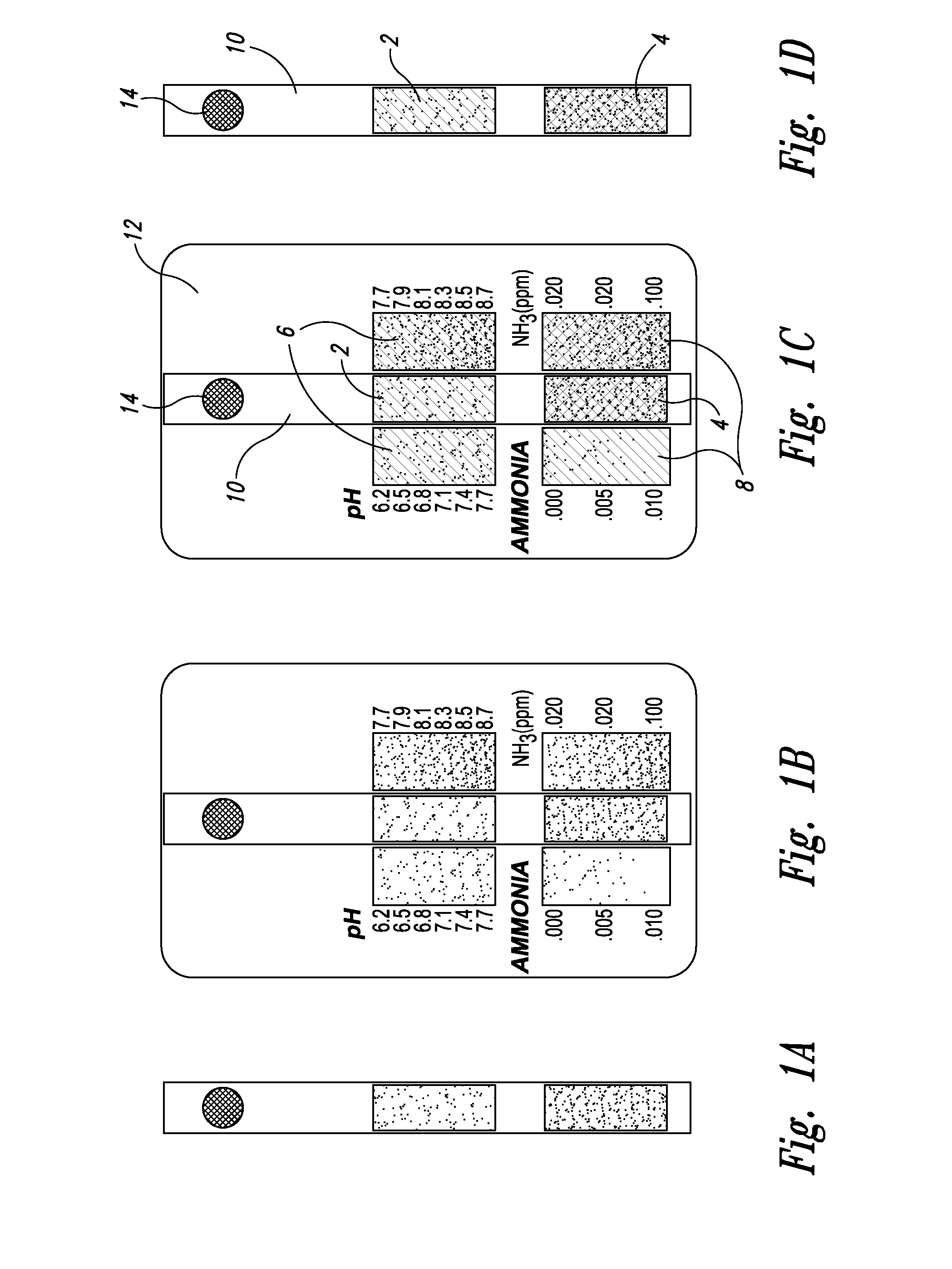Visual, continuous and simultaneous measurement of solution ammonia and hydrogen ion concentration
a technology of ammonia and hydrogen ion concentration, which is applied in the direction of instruments, chemical methods analysis, and analysis using chemical indicators, can solve the problems of only being able to measure, large changes in the equilibrium balance of the two forms of ammonia, and incorrect interpretation of the henderson-hasselbach relationship, etc., to achieve enhanced calorimetric determination of detected substances and enhanced sensitivity
- Summary
- Abstract
- Description
- Claims
- Application Information
AI Technical Summary
Benefits of technology
Problems solved by technology
Method used
Image
Examples
Embodiment Construction
Definitions
[0025] With respect to proximate, simultaneous, continuous measurement of solution pH and ammonia using the at least one pH-sensing and the at least one ammonia-sensing portions of the present inventive devices, the term “proximate” refers to the fact that the at least one ammonia-sensing portion, and the at least one pH-sensing portion are: (i) relatively disposed in a close, near, adjacent or adjoining spatial relationship to one another, but not necessarily contiguous; and (ii) are integral with or attached to a submersible member, or a plurality of proximately connected, coordinately-submersible members, such that sensors are coordinately and proximately submersible in the solution to be tested. Accordingly, with respect to the submersible member, or the plurality of proximately connected, coordinately-submersible members, the term “submersible” refers to the fact the member or proximate members must be at least partially submersible in a solution; that is, must be ...
PUM
| Property | Measurement | Unit |
|---|---|---|
| thickness | aaaaa | aaaaa |
| thickness | aaaaa | aaaaa |
| pore sizes | aaaaa | aaaaa |
Abstract
Description
Claims
Application Information
 Login to View More
Login to View More - R&D
- Intellectual Property
- Life Sciences
- Materials
- Tech Scout
- Unparalleled Data Quality
- Higher Quality Content
- 60% Fewer Hallucinations
Browse by: Latest US Patents, China's latest patents, Technical Efficacy Thesaurus, Application Domain, Technology Topic, Popular Technical Reports.
© 2025 PatSnap. All rights reserved.Legal|Privacy policy|Modern Slavery Act Transparency Statement|Sitemap|About US| Contact US: help@patsnap.com



